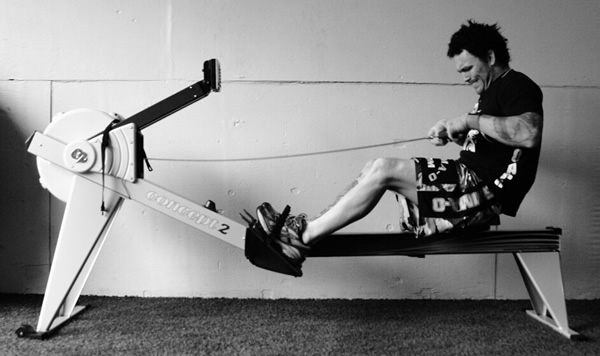
If you’ve been through a few of our articles, you may have noticed a common thread. In fact, the majority of my posts are elaborations of a few core principles of conditioning and fitness. The truth is that having great conditioning really isn’t as difficult as a lot of people make it out to be, but it’s also much more than just working running yourself into the ground over and over again as far too many people often do.
To help show you how easy getting in great shape can be, I’ve gone throughout the entire 8weeksout articles section and boiled it down to the meat and potatoes to give you…
The Ultimate Conditioning Guide
These are the 8 fundamental principles of conditioning distilled from more than 15 years of working with top-level athletes from different sports all over the world.
1. Know the demands of your sport
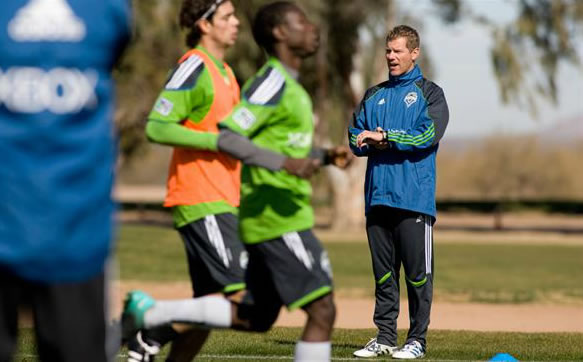
This may seem simple, but it’s astonishing how many people focus on training the wrong energy system for their sport (we’ll talk more about this on #5). What are the specific demands that your sport places on your body?
Is it primarily short and explosive in nature, longer duration with low power output, or some mixture of both?
The first and most important principle of all is that you must start by truly understanding the energy system demands of your sport, or particular goal.
Here’s a hint: if your sport is longer than 60 sec of activity, it’s going to have a huge aerobic component.
The first and most important principle of all is that you must start by truly understanding the energy system demands of your sport, or particular goal
tweet thisIn other words, if you’re a combat athlete and you’re preparing for 3 rounds of 5 minutes each, then why are you sparring 8-10 rounds straight leading up to the fight? The proper way to go about this, assuming you want to do 8-10 rounds, would be to train 3 rounds of 5 minutes, rest 10-15 minutes or more, and then do another 3 rounds, etc.
Your training efforts will carry a lot further you truly understand the total energy demands and the environment of your sport and then prepare your body for it.
To get to the root of what exactly your sport requires, you can start with these resources:
The Anaerobic Power Reserve (video)
The Truth About Energy Systems
How Much Strength Do Athletes Need?
What Training Intensity Should I Use?
Research Review: Molecular Responses to Strength & Endurance Training – Are They Incompatible?
Once you have a handle on what your sport requires, you can figure out where you need to improve. Which leads us to point #2…
2. Evaluate your weaknesses

We all like to train the areas that we excel in, but that’s not going to contribute to the bigger picture of having well-rounded conditioning. Far too many athletes have failed to improve over the years because they spent all their time training what they are already good at while neglecting the things they struggle the most with.
This is a great recipe for working hard, but not working smart.
It’s vitally important to assess your fitness so you can understand and minimize your weaknesses within the context of your sport.
Again, your focus should be on training for your sport’s demands, so of course there’s no reason to be going on long distance runs if you’re assessment shows you lack endurance but you’re training to throw shot put.
What should your assessment look like?
The answer is that it depends on your sport. One of the most important things to keep in mind, however, is that your assessment should correlate to performance in your sport or relative to your goal. All the testing and assessment in the world won’t do any good if the results have little to do with real world performance.
You can see a simple example of how I use testing and assessment to guide programming by checking out the free 4 Week Conditioning Program. In video 1, I’ll walk you through a basic conditioning assessment that carries over into most sports that require a balance of strength, power and endurance.
3. Follow a training program
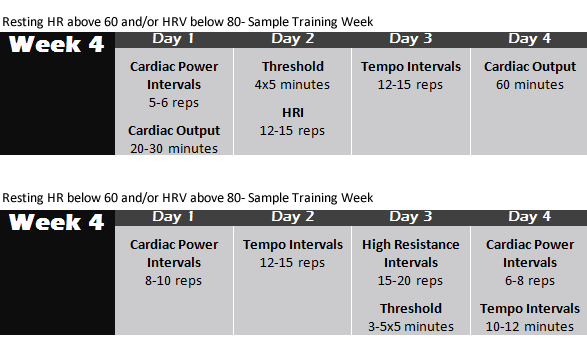
Blindly working out without a road map of where you want to go is a waste of time. There are much more efficient ways for you to train and see the results you want.
Your training should be structured so that the benefits of each workout have a culminating effect over time. This means that the rationale behind your daily workout and where it fits within the bigger picture should be clearly defined before you head to the gym.
It’s never enough to just show up and work hard and expect the results to just happen. This is like blindly throwing money at the stock market and expecting to make a big return just because you made an investment.
To be successful takes an intelligent approach, and just like you need to invest your money wisely if you want it to grow, you need to invest your time wisely if you really want your conditioning to improve.
Using a “one-size-fits-all” workout that some random person throws up online is never the most efficient way to train either (and often times, it’s dangerous). Your program should be specific to your goals, where you are within your season, your body’s limitations or injury history, etc.
In short, have a plan and make sure your plan is designed for you.
If you don’t know how to design a training program, or just want to get better at it, I have some resources for you:
Become a Certified Conditioning Coach
This live 2 day course covers everything you need to know to design effective conditioning programs for team sports, combat sports, mixed sports, and more. There is no better way to become a real-world conditioning expert. Click here now to see upcoming course dates
You’ll get a full breakdown of which methods and exercises work each energy system, what the goal of each method is, how to organize your methods within the training week, how to structure your programs within the bigger picture of your season or sport, etc.
Along with receiving sample workout templates, you’ll learn basic principles and receive step-by-step instruction that will make programming easier, you’ll understand which assessments will help you choose the right training methods, you’ll know how to structure training blocks, and you’ll learn how to analyze and manage your program on a daily, weekly, and monthly basis.
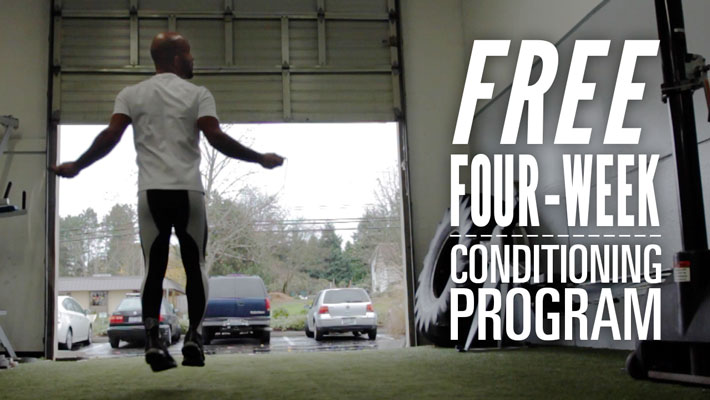
Free 4 Week Conditioning Program
This is a crash-course in choosing the right training methods. You’ll receive a free 4-week program (hence the name) and I’ll walk you through what each method and exercise accomplishes within the bigger picture.
Bondarchuk Principles of Periodization:
Dr. Anatoliy Bondarchuk is widely recognized as one of the best, most successful coaches in the history of sports. In this video series we break down the principles behind Bondarchuk’s programming so that you can apply his concepts to your own training.
4. Match your methods to your goals

There is a simple truth: not all methods were created equally.
Far too often, people think about the process of designing programs as nothing more than choosing exercises, as if all that’s needed is some magic combination of exercises.
The truth, however, is that exercises are only as effective as how they are applied, and this is where training methods come into play.
The methods define how the exercises should be performed and this is what ultimately dictates the results they’ll produce.
Depending on your performance goals, your abilities, your available equipment, etc., there are methods that will be best suited towards what you’re trying to achieve and other methods that simply aren’t.
The place to start is to start by understanding how a training method works, what it will cause to change, how your own body responds to it, how it fits within your training program, etc.
Not only that, but these methods should vary depending on where you are in the training year.
To give you an example of what I’m talking about when it comes to training methods, check out these videos and articles:
High Resistance Interval Training
Secrets of Muscular Endurance (particularly secret #1)
5. Improve your movement
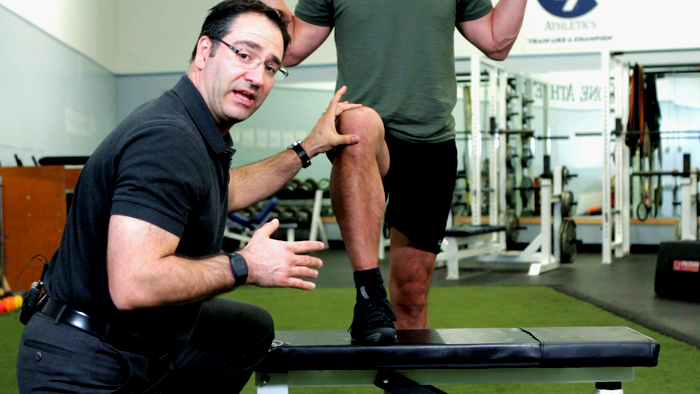
The fitness world has seen a huge increase in the importance of fundamentally sound movement over the last several years. Almost overnight, the terms “Functional Training” started to dominate the industry.
Though there is no doubt that in many ways the shift in emphasis has led to more good than bad, it has also tended to focus on areas of movement that may not always have the most real-world transfer into performance and conditioning.
What I mean by this is while evaluating and working to improve unloaded bodyweight type movements can certainly offer value and good feedback, movement qualities also need to be evaluated under higher loads, higher levels of fatigue and in actual sports movements.
There is no doubt that being more fundamentally sound and efficient in all your movements will help improve your conditioning, but of course the most important of these movements are the ones that actually take place in your sport.
This means you should be using movement evaluations that encompass broad, general movement patterns as well as those that are inherently specific to the movements of your sport or goal.
Here’s another big hint and something I’ll be discussing much more in future articles: how your body moves when it’s fatigued is highly trainable. Pushing the body to a fatigued state should not only be thought of as a test of mental toughness, but rather as an opportunity to redefine the way the body reacts to fatigue.
This is what true “functional training” is really all about – or least it should be.
To see some great examples of how to build movement quality, check out these videos by Dr. Gerry Ramogida and Kendal Yonomoto:
Med Ball Training for Movement
Med Ball Training for Movement: Part II
Med Ball Training for Movement: Part III
6. Use high & low intensity
Over the last few years, there seems to be a cult uprising of “no pain, no gain” disciples. Alongside this comes the idea that the higher the intensity, the better.
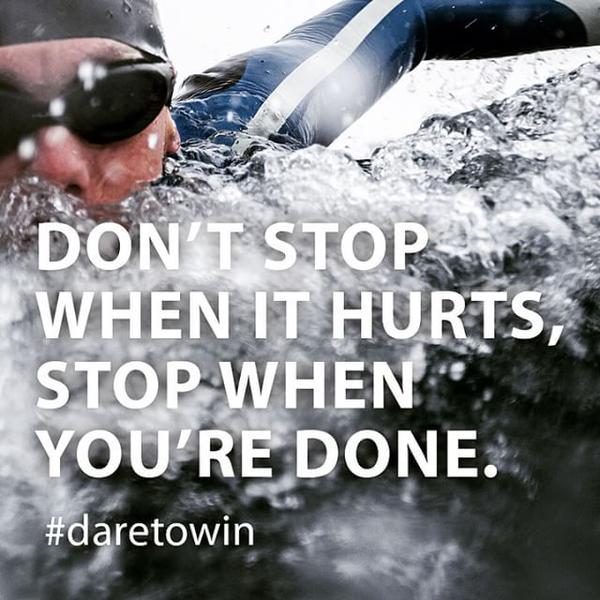
Conversely, low intensity methods have gotten a bad rap. Why train “low and slow” when you can get the same results in half the time using a higher intensity?
The reality is that there’s a time and a place for using both high and low intensity work.
Not only should you be employing both methods, but the way you organize your high and low intensity methods is also critical.
For example, a low-intensity workout can help your nervous system recover after an exhausting higher intensity day or lead to overuse injuries and prevent further improvement if it’s used as the sole training means.
Likewise, a high-intensity workout can provide the proper stimulus to improve conditioning and increase anaerobic power reserve, or it can lead to overtraining and decreases in performance if used all the time.
Even though I’m often known as the guy that brought low intensity methods back into the discussion with articles like Roadwork 2.0 and my book Ultimate MMA Conditioning, the truth is that in any sport that requires a balance of strength, power and endurance, there is a need for more than just one level of intensity.
If I’ve paid more attention to lower intensities in recent years, it’s only because low intensity work seems to be under the most attack.
As backwards as it sounds, it’s harder to convince someone of the importance of sustainable training and long-term planning than it is to get them hyped to finish a workout at all costs.
Case in point: the growth CrossFit
Fortunately, the tide seems to be turning back to a more balanced approach because anyone that spends more than a few months trying to go high intensity all the time inevitably end up hitting a plateau and/or injured sooner or later.
A smarter, more sensible approach to training is to intelligently use a variety of intensities over time to build the body up without slowly breaking it down at the same time.
If you want to see firsthand how I’ve arranged high/low intensity workouts in a sample program, check out the free 4 Week Conditioning Program:
Free 4 Week Conditioning Program
If you want to truly understand what high and low intensity workouts are doing for you in terms of energy system training, you’ll want to sign up for the Truth About Energy Systems (also free):
If you want to learn more about what low intensity training is doing for you, here are some articles that make the case for this kind of crucial, yet “less sexy” training:
Putting an End to the LSD vs. HIIT Debate
For coverage of various interval methods you can use in your high and low intensity training, check out these articles and videos:
Repeated-Sprint Athletes: Energy Systems & Training
High Resistance Interval Training
Never Gas Out: MMA Interval Training
For more information on high-low training, you’l want to read this article:
7. Stay healthy
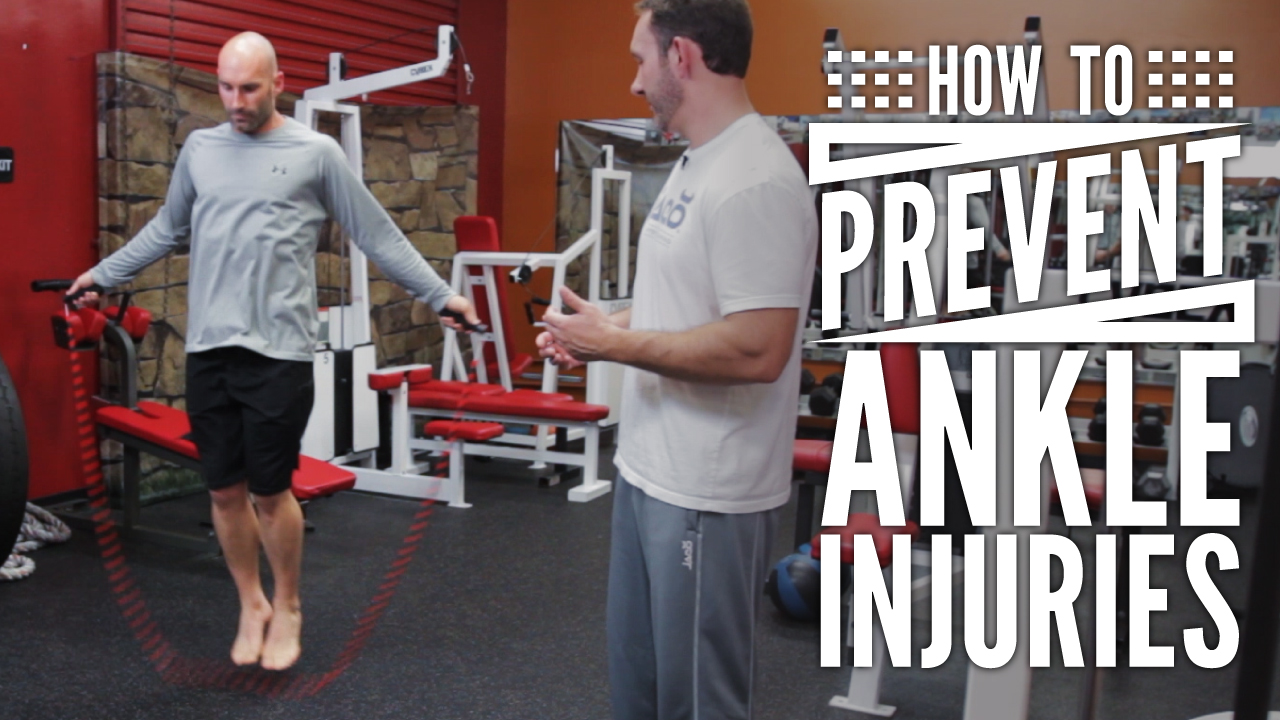
First and foremost, the key to injury prevention is to understand that it takes a multifaceted approach to achieve it.
While things like foam rolling, stretching, manual therapy, corrective exercises, etc., are important pieces of the puzzle, the value of overall stress management, monitoring your training, having a sound nutrition program, getting enough sleep, etc., cannot be overstated when it comes to staying healthy and preventing injuries.
Injury prevention is really about two things – starting everything with the right mindset and understanding your body. Understanding your body comes from paying attention to how you respond to training, sleep, nutrition, mental stress, travel, etc.
Every athlete should keep a detailed training journal where they track these things and take notes over time.
When it comes to mindset, the biggest thing is to avoid the “more is always better” mentality that plagues the training programs of too many athletes. The right amount is enough and too much beyond that is most often harmful rather than better.
So how do you know what “the right amount” is exactly?
Well, it starts with the principle we’ll talk about next: monitoring and managing.
Recovery and injury prevention resources:
Combat Sport Injury Prevention
Sports Injuries: Let’s Stop Blaming the Exercise
8. Monitor & Manage
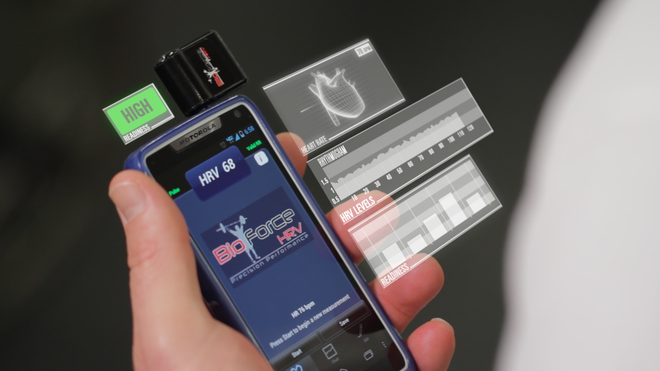
With the rapid rise in the availability and affordability of wearable technology today, it’s become reasonable for every athlete to monitor themselves to make their program more effective.
Heart rate monitors, heart rate variability, activity trackers, GPS, PUSH bands, etc. have made it easier than ever to monitor, manage and collect invaluable biofeedback that you can use to learn about your body and individualize your program.
There are two real keys to making this sort of technology work:
First, don’t start by trying to monitor everything and anything. Collecting more data than you know what to do with will only lead to more confusion than anything else. Over time you can start to incorporate more tools into your monitoring toolbox, but start simple.
If you want to start with just one monitoring tool, heart rate variability like BioForce HRV is the best one to start with because it measures “training readiness” and helps you gauge the impact of everything from training to nutrition to sleep all in a single number.
From there, the next tools to add would be ones that allow you to gauge the volume, intensity and stress of your training sessions. A good heart rate monitor, something like the Polar RS300, along with the PUSH band, are the two best products in this category.

The heart rate monitor can help gauge the training effect of any cardiovascular type work and the PUSH band does the same thing when it comes to strength training exercises.
The second key to making this sort of technology work is to actually start using it.
Just like you wouldn’t drive across the country without using a GPS to help you get there, there is no need to wander aimlessly each day in your program wondering when the results are going to actually show up.
tweet thisAll too often people, as well as teams, collect lots of data but then never really do anything with it. If you’re going to spend the money and take the time to collect data, then you might as well actually use it to improve your results.
An effective monitoring and management strategy should work by reducing the amount of guesswork that goes into most training programs. You shouldn’t have to guess what to do today or wonder if you’re really improving or not.
Just like you wouldn’t drive across the country without using a GPS to help you get there, there is no need to wander aimlessly each day in your program wondering when the results are going to actually show up.
Take a look at these articles and videos to get a better idea of how to actually use the latest technology to get the most out of your program:
Video: How to Use a Heart Rate Monitor
How to Use a Heart Rate Monitor (article)
5 Ways to Improve Your Conditioning
Here’s what you do now…
For more than 15 years, I’ve been helping athletes of all levels improve their conditioning by doing nothing more than following the principles I’ve outlined above.
There is no magic formula, no top secret exercise and no magic pill when it comes to conditioning…but the truth is that there really doesn’t need to be, because the basics are incredibly effective when they are followed as I’ve outlined above.
Take some time, read through all the resource links I’ve provided and start evaluating your program by comparison to see what’s missing.
Do you truly understand the specific demands you’re preparing for?
Are the methods you’re using based on solid science and leading your body to adapt in the right ways?
Are you currently taking advantage of the latest technology like HRV to eliminate the guesswork and stop wasting time?
If the answer to any of these questions is no, then start by fixing your program one step at a time. Find out what’s holding your conditioning back and make the changes necessary to fix it.
Whatever your goals or abilities, there is no doubt that your conditioning can be improved, and it can be improved quickly, by doing nothing more than following the simple principles I’ve outlined throughout this article.
Now it’s time to get to work…
Taking the next step

If you’re hungry for more and ready to become a legitimate expert in conditioning, the best option is to learn from me directly by coming to a live 2 day Certified Conditioning Coach Course (keep in mind these courses sell out extremely fast). I’ve literally crammed more than 10 years worth of experience writing conditioning programs for some of the world’s top athletes into just 2 days. Click here to learn more now


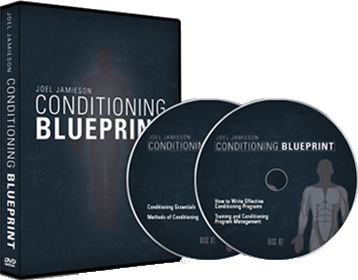
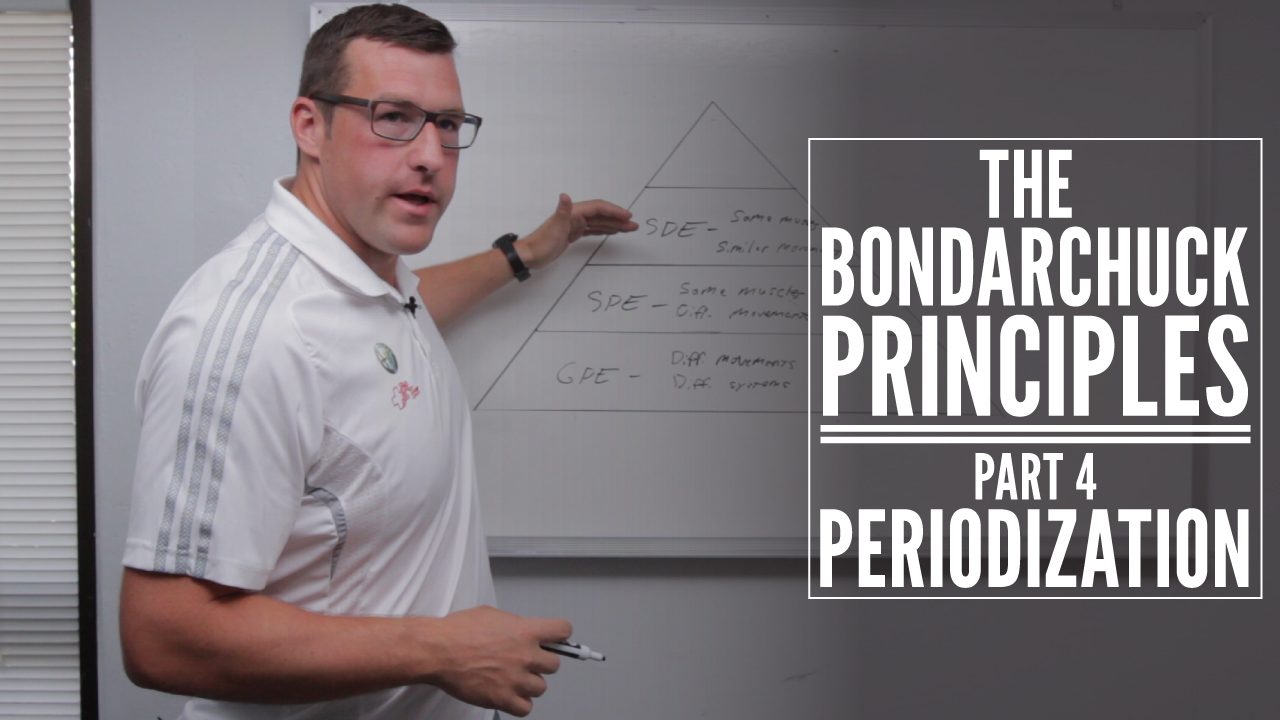
Comments